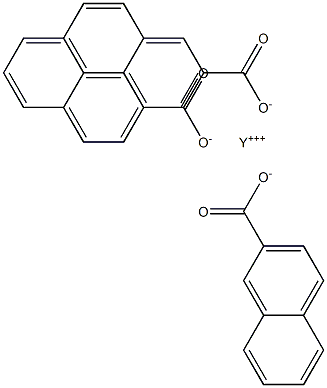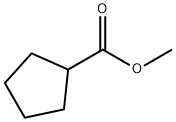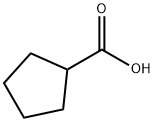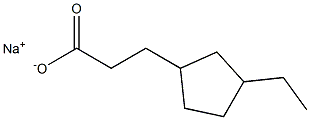Copper naphthenate
Synonym(s):CNC;Na(+)/Ca(2+)-exchange protein 1;NCX1;SLC8A1;Sodium/calcium exchanger 1
- CAS NO.:1338-02-9
- Empirical Formula: 2(C11H7O2).Cu
- Molecular Weight: 405.9
- MDL number: MFCD00146564
- EINECS: 215-657-0
- SAFETY DATA SHEET (SDS)
- Update Date: 2024-12-18 14:08:57
What is Copper naphthenate?
Chemical properties
blueish-green solid
The Uses of Copper naphthenate
Wood preservative, antifouling agent
Preparation
Copper(II) naphthenate is prepared by the reaction of copper(II) hydroxide or basic copper(II) carbonate with naphthenic acid in a hydrocarbon solvent or by the reaction of copper(II) sulfate with sodium naphthenate. It is insoluble in water. It is used to control fungi and mildew in textiles, woods, and in antifouling pigments. Copper(II) naphthenate is usually marketed as a solution containing 8% copper.
Hazard
Flammable, moderate fire risk (solution). Toxic by ingestion and inhalation.
Health Hazard
Recommended Personal Protective Equipment: Goggles or face shield; plastic gloves (as for gasoline); Symptoms Following Exposure: Vapor causes mild irritation of eyes and mild irritation of respiratory tract if inhaled. Ingestion causes irritation to stomach. Aspiration causes severe lung irritation and rapidly developing pulmonary edema; central nervous system excitement followed by depression; General Treatment for Exposure: INHALATION: remove victim to fresh air. EYES: wash with copious amounts of water for at least 15 min. SKIN: wipe off and wash with soap and water. INGESTION: do NOT induce vomiting; guard against aspiration to lungs. ASPIRATION: enforce bed rest; give oxygen: call a doctor; Toxicity by Inhalation (Threshold Limit Value): 500 ppm; Short-Term Exposure Limits: Data not available; Toxicity by Ingestion: Grade 1; oral rat LD50= 4-6 g/kg; Late Toxicity: Data not available; Vapor (Gas) Irritant Characteristics: Vapors are non-irritating to the eyes and throat; Liquid or Solid Irritant Characteristics: Minimum hazard. If spilled on clothing and allowed to remain, may cause smarting and reddening of skin; Odor Threshold: Data not available.
Flammability and Explosibility
Flammable
Chemical Reactivity
Reactivity with Water No reaction; Reactivity with Common Materials: No reaction; Stability During Transport: Stable; Neutralizing Agents for Acids and Caustics: Not pertinent; Polymerization: Not pertinent; Inhibitor of Polymerization: Not pertinent.
Agricultural Uses
Fungicide, Insecticide: Mercaptan scavenger in technical pesticide. Not listed for use in EU countries. Registered for use in the U.S.
Trade name
CHAPCO® Cu-NAP; CUNAPSOL®; CUPRINOL®; TROYSAN® COPPER 8%; TROYSAN® COPPER 11.5%; WILTZ®-65; WITTOX®-C
Safety Profile
A poison by ingestion. A pesticide, A dangerous fire hazard when exposed to heat or flame; can react with oxidizing materials. To fight fire, use foam, CO2, dry chemical.
Properties of Copper naphthenate
| Boiling point: | 154-202 °C(Press: 800 Torr) |
| Density | 1.055 g/cm3 |
| vapor pressure | 0.317Pa at 25℃ |
| Flash point: | 40°C |
| storage temp. | -70°C |
| form | liquid |
| color | dark green |
| Odor | Like gasoline: slight aromatic. |
| Water Solubility | 70.9-88.1mg/L at 20-25℃ |
| Stability: | Stable. Incompatible with strong alkalies, strong oxidizing agents, strong acids. |
| EPA Substance Registry System | Copper naphthenate (1338-02-9) |
Safety information for Copper naphthenate
Computed Descriptors for Copper naphthenate
Copper naphthenate manufacturer
Veekay Chemicals
New Products
(S)-3-Aminobutanenitrile hydrochloride 4-Methylphenylacetic acid N-Boc-D-alaninol N-BOC-D/L-ALANINOL Tert-butyl bis(2-chloroethyl)carbamate 3-Morpholino-1-(4-nitrophenyl)-5,6-dihydropyridin- 2(1H)-one Furan-2,5-Dicarboxylic Acid Tropic acid 1-Bromo-3,5-Di-Tert-Butylbenzene S-2-CHLORO PROPIONIC ACID ETHYL ISOCYANOACETATE 2-Bromo-1,3-Bis(Dimethylamino)Trimethinium Hexafluorophosphate 4-IODO BENZOIC ACID 3-NITRO-2-METHYL ANILINE 1-(2,4-DICHLOROPHENYL) ETHANAMINE (2-Hydroxyphenyl)acetonitrile 4-Bromopyrazole 2-(Cyanocyclohexyl)acetic acid 4-methoxy-3,5-dinitropyridine 1-(4-(aminomethyl)benzyl)urea hydrochloride 2-aminopropyl benzoate hydrochloride diethyl 2-(2-((tertbutoxycarbonyl)amino) ethyl)malonate tert-butyl 4- (ureidomethyl)benzylcarbamate Ethyl-2-chloro((4-methoxyphenyl)hydrazono)acetateRelated products of tetrahydrofuran








You may like
-
 1338-02-9 Copper(II) naphthenate 98%View Details
1338-02-9 Copper(II) naphthenate 98%View Details
1338-02-9 -
 1338-02-9 99%View Details
1338-02-9 99%View Details
1338-02-9 -
 Copper naphthenate, 8% CAS 1338-02-9View Details
Copper naphthenate, 8% CAS 1338-02-9View Details
1338-02-9 -
 Copper naphthenate, 6% CAS 1338-02-9View Details
Copper naphthenate, 6% CAS 1338-02-9View Details
1338-02-9 -
 ANTI-SLC8A1 (CENTER) antibody produced in rabbit CASView Details
ANTI-SLC8A1 (CENTER) antibody produced in rabbit CASView Details -
 PRKAR1A, His tagged human CAS 1779529-05-3View Details
PRKAR1A, His tagged human CAS 1779529-05-3View Details
1779529-05-3 -
 14714-50-2 (2-Hydroxyphenyl)acetonitrile 98+View Details
14714-50-2 (2-Hydroxyphenyl)acetonitrile 98+View Details
14714-50-2 -
 118753-70-1 98+View Details
118753-70-1 98+View Details
118753-70-1